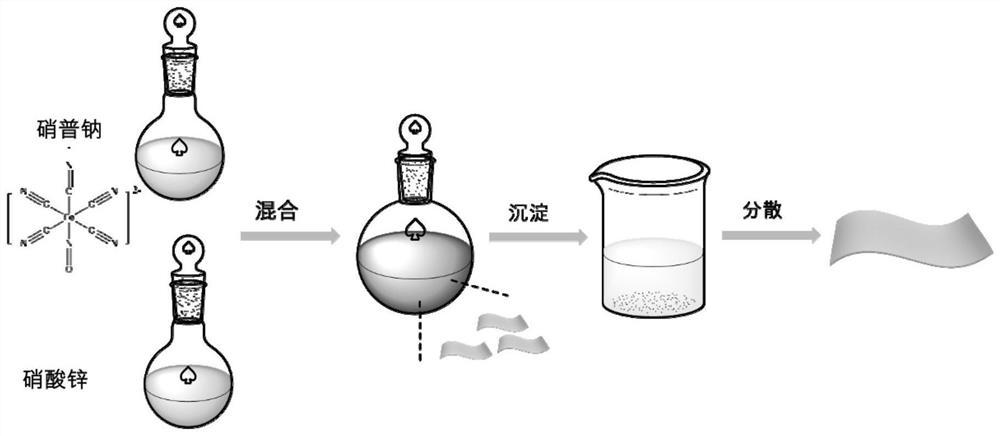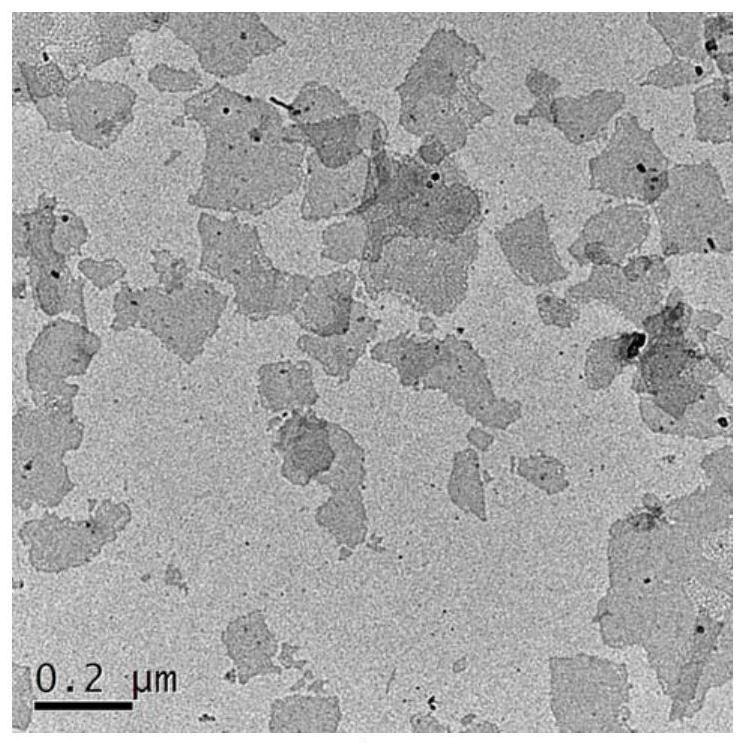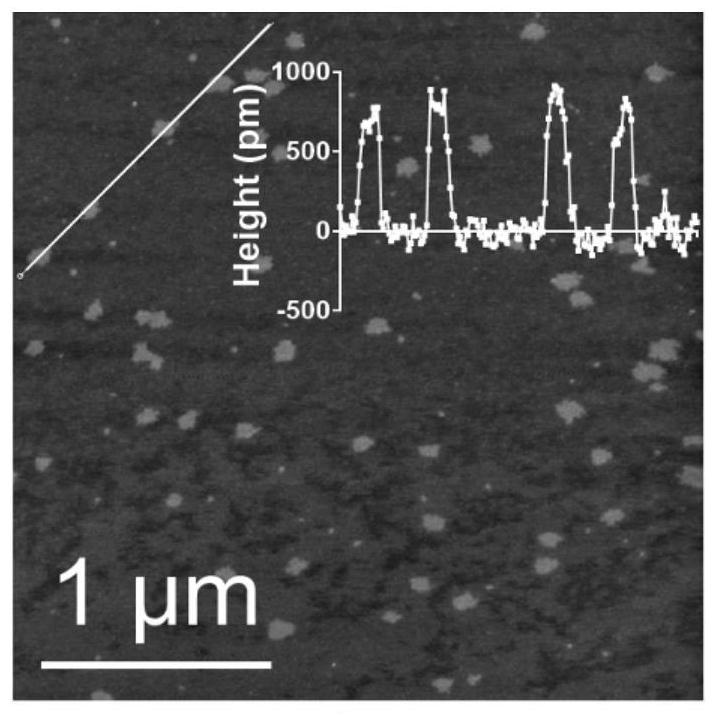Nanosheet containing nitric oxide donor and its preparation method and application
A nano-sheet, medical technology, applied in the field of medicine, can solve the problem of inability to guarantee the delivery of nitric oxide to tumors, and achieve the effect of a simple method
- Summary
- Abstract
- Description
- Claims
- Application Information
AI Technical Summary
Problems solved by technology
Method used
Image
Examples
Embodiment 1
[0057] Embodiment one: Synthesis and characterization nanosheet ZnNO:
[0058] Such as figure 1 As shown, synthesize nanosheets by inverse microemulsion method: the first step, surfactant Igepal CO-520 is added in cyclohexane (volume ratio of Igepal CO-520 and cyclohexane=2:5), Mix evenly to form a microemulsion. Add 0.4 moles per liter of sodium nitroprusside solution into the microemulsion (v / v=1 / 50) to form the anion phase. Adding 0.1-0.4 moles per liter of zinc ion solution into the microemulsion (v / v=1 / 50) constitutes the cationic phase. Control the temperature at 25-35° C., add an equal volume of the anion phase to the cation phase dropwise, and mix and stir overnight. In the second step, the nanomaterials are precipitated by centrifugation, and then the nanomaterials are washed several times with organic solvents such as ethanol.
[0059] The nanosheets were then characterized, electron microscope images such as figure 2 It is shown that the nanomaterial is a two...
Embodiment 2
[0061] Example 2: Nanosheets Label Nuclides and Induce Nitric Oxide Release
[0062] Ultrasonic dispersion of nanosheets in aqueous solution, addition of radionuclides 32 P, shaking in a shaker at 50°C for 1 hour, and centrifuging to remove free nuclides in the supernatant to obtain ZnNO ( 32 P). The stability of the radiolabel was tested with results such as Figure 8 As shown, ZnNO( 32 P) has high radiolabeling stability. Disperse again in an aqueous solution, place it under dark conditions, take the solution and centrifuge at different time points, and test the concentration of nitric oxide in the supernatant. Such as Figure 9 Nuclides were shown to induce the release of nitric oxide.
Embodiment 3
[0063] Embodiment three: the killing of cancer cell by nuclide-labeled nanosheets:
[0064] ZnNO with different concentrations and radioactive doses ( 32 P) Incubate with mouse colon cancer cells, and measure cell viability after 72 hours. The result is as Figure 10 As shown, blank nanosheets had no significant cytotoxicity, while ZnNO( 32 P) has a strong cell killing effect. The concentration of nitric oxide in the supernatant of the cell culture medium of the last group was detected as Figure 11 , ZnNO( 32 Group P) has a high concentration of nitric oxide.
PUM
 Login to View More
Login to View More Abstract
Description
Claims
Application Information
 Login to View More
Login to View More - R&D
- Intellectual Property
- Life Sciences
- Materials
- Tech Scout
- Unparalleled Data Quality
- Higher Quality Content
- 60% Fewer Hallucinations
Browse by: Latest US Patents, China's latest patents, Technical Efficacy Thesaurus, Application Domain, Technology Topic, Popular Technical Reports.
© 2025 PatSnap. All rights reserved.Legal|Privacy policy|Modern Slavery Act Transparency Statement|Sitemap|About US| Contact US: help@patsnap.com



